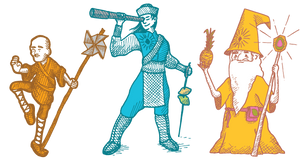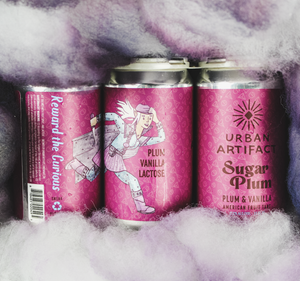Brettanomyces. Lactobacillus. Pediococcus. Saccharomyces. Micro-organisms not often found in beer, at least not since Louis Pasteur made his remarkable (albeit controversial) discovery on April 20th, 1862 which confirmed the germ theory that microorganisms caused spoilage in wine, beer and milk, and earned him a permanent pipeline of beer direct to his house from a local English brewery. He also developed a technique for stabilizing alcoholic beverages and milk through a process of rapid heating and cooling, now called pasteurization. This created a rapid expansion of shelf stable beer and led to the eventually domination of Saccharomyces driven fermentations for beer. This homogenization in fermentations led to a slow death and consolidation for many beer styles as well. There were a few holdouts of spontaneous and mixed culture fermentations, namely beers from the Flanders region in Europe, but overall Pasteur’s discovery paved the way for the domination of light lager. However it wasn’t all bad, this increased knowledge of fermentation led to an increase in a brewer’s ability to brew the same beer consistently week after week and increased consumer confidence in their beer purchases in that they knew when they bought a commercial beer it wouldn’t be spoiled.
Even with this increased knowledge of microbiology, brewers focused mainly on developing and perfecting fermentation techniques for the now ubiquitous Saccharomyces genus of yeast. This left these other wild microorganisms, Brettanomyces, Pediococcus, Lactobacillus, and the flavors they are capable of producing in beer often neglected and forgotten. A few intrepid brewers have followed, or continue to follow, the path of wild yeast and bacteria mixed fermentations creating unique and refreshing taste experiences. It is in their wild footsteps that we take inspiration for our wild, tart and sour beers. Using modern microbiological techniques, culture isolations, temperature and process control, we are able to consistently develop and brew beers that are tart, sour and express funky and fruity wild yeast flavors while maintaining shelf stability and refreshment.
The possibilities for new beer flavors and styles are endless. Wild yeast and bacteria have largely been ignored in recent beer history and, similar to the dark ages, have successfully evaded the brewer’s scientific method and any innovation or advancement that comes along with it. Wild and sour beers bring back memories of a romantic time in beer; when fermentation was believed to have occurred spontaneously, a time before yeast and bacteria were believed to even exist, a time when the microorganisms responsible for fermentation were simply called “godisgood”. It doesn’t need to stop there, the future for wild yeast and bacteria is bright and refreshing. By applying modern day knowledge, science, and art, we are able to consistently create beers that are unique in the craft beer marketplace. There is a reason that before the advent of light lager, the sour beer style Berliner Weisse, was the most popular and refreshing in the world. It even earned the nickname “Champagne of the North” by Napoleon himself (and some say the reason he invaded Germany & Prussia in the first place), a title only one other beer tries to claim.
In the future you can expect regular updates from our brewing team here at Urban Artifact. Topics of “Wild Pitch” will range from more history of sour and wild beer styles, production updates and beer news, homebrewing recipes, and any other random musings our brewing team may have. If you haven’t yet, stop on by for a tour with our brewing team on the weekends or for your own sample of #wildculture. If you see one of us, don’t be shy, we love the opportunity to nerd out on beer with those who have a bent for all things wild.
Cheers,
Bret Kollmann Baker
Chief of Brewing Operations







